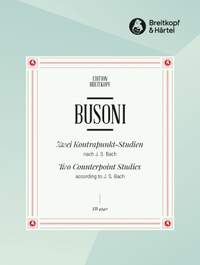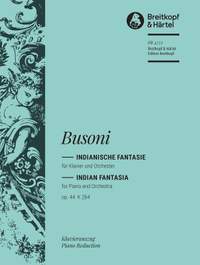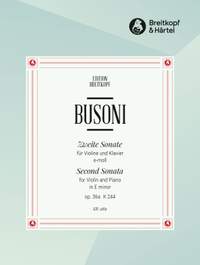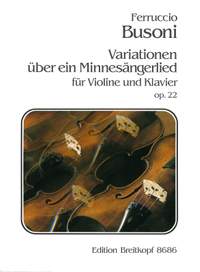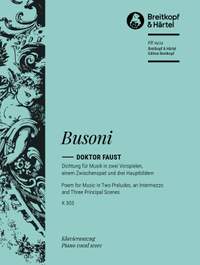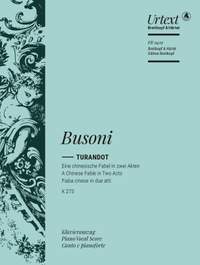Anniversary,
100th Anniversary of the Death of Ferruccio Busoni

Italian composer, pianist, conductor, writer, and editor Ferruccio Busoni had a successful international career in his lifetime, and his reputation allowed him to work closely with many of the leading musicians, artists and literary figures of his time. He was a talented pianist from an early age, studying at the Vienna Conservatory, and going on to have lessons with Wilhelm Mayer and Carl Reinecke. His proficiency was in part due to the physiological peculiarity of his hands' extraordinary span, seen in an xray by musicologists of his time, attempting to discover the secret of his success. The image here shows the x-ray taken by Rudolf M. Breithaupt's 'Die natürliche Klaviertechnik', Leipzig 1905. Busoni was additionally a proficient keyboard and composition teacher who held teaching positions at various important international conservatories.
Whilst enjoying legendary fame as a pianist, Busoni was also a prolific composer. Of his approximately 300 compositions, more than half of those written before 1900 are considered early and youthful works, still very much indebted to tradition. Busoni however increasingly turned towards modernism during the first decade of the new century, as seen in works like the Sonatina Seconda, and Entwurf einer neuen Ästhetik der Tonkunst. As well as his own compositions, Busoni transcribed several works by Bach and Liszt for piano including the Bach-Busoni Collected Edition and Liszt's Fantasia and Fugue 'Ad nos, ad salutarem undam'.

Later in his career, Busoni presented himself to the musical world as an opera composer, and his work Doktor Faust is considered to be his main stage work, despite it never being completed by the composer himself. After his death in 1924, his student Philipp Jarnach completed the opera which was finally premiered in Dresden in May 1925.
In 1885 at age nineteen, Busoni came to Leipzig, and Breitkopf & Härtel were successful in the competition to sign up the young composer. The publishing house subsequently published Busoni’s first works, justifiably viewing itself to this day as the Busoni publisher. Breitkopf & Härtel capitalized on Busoni’s extraordinary abilities as a music researcher and arranger, for example, as co-editor of the complete editions, begun in 1907, of Franz Liszt’s works and J. S. Bach’s piano works.
Busoni Sheet Music
The present edition consists of two volumes and offers to the students a useful selection of Busoni’s study material, enriched by adding the Bach studies. The selection is limited to exemplary material so that the groups of themes can be treated with precision. Each chapter is followed by instructions from the editor in German and English.
Available Format: Sheet Music
“All alterations and additions pursue the educational intent of affording the student insight into the mechanism of the composition. Moreover, they illustrate and supplement the views presented only in a sketchy manner in the introductions. In several cases, it takes the sum of the comments on the various pieces to constitute the all-encompassing opinion on one and the same question.” (Ferruccio Busoni)
Available Format: Sheet Music
Two Counterpoint Studies according to J. S. Bach, KB40 'Canonical Variations and Fuge from the “Musical Offering” BWV 1079' & KB41 'Fantasia and Fugue in A minor BWV 904'.
Available Format: Sheet Music
Printed in score form; two copies are needed for performance.
Available Format: Sheet Music
Printed in score form; two copies are needed for performance with 2 pianos. Cadenza by the composer is inserted.
Available Format: Sheet Music
Busoni's six movement work for violin and piano.
Available Format: Sheet Music
In his Minnesinger Variations, the young Busoni amply displays his considerable talents. Virtuosos can expect some extravagant harmonic and pianistic surprises, all neatly tucked away in the score next to all manner of borrowings (after all, Busoni was only 13!) from illustrious models.
Available Format: Sheet Music
Ferruccio Busoni died in 1924, leaving his last opera Doktor Faust incomplete in two places The premiere took place posthumously with the addenda by Busoni’s student Philipp Jarnach. In 1984, the conductor and Busoni biographer Antony Beaumont presented his addendum based on autograph sketches. This edition combines for the first time the solutions previously published separately and offers, in addition, a music text with many improved passages that is well aligned with the full score.
Available Format: Sheet Music
In Turandot Busoni draws on elements of the commedia dell’arte. As a publication preliminary to the Busoni year 2024, the new Urtext edition includes Oriana Previtali’s singable translation. The music text is based on the relevant sources (full-score copies made during Busoni’s lifetime), all of them located in the publishing house archives.
Available Format: Sheet Music
The idea behind this work was to combine a major speaking role with a part for a female singer and orchestra in the spirit of the opera buffa. The overall tone is pacifistic and anti-bourgeois. Busoni’s inspiration was that of an opera play in the style of Italian improvised comedy; he wanted types and characters on stage whose varying typologies would provide the source of conflict.
Available Format: Sheet Music





